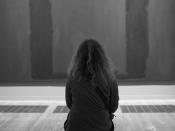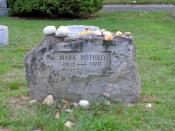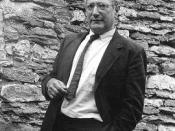Art Appreciation
-Mark Rothko-
Mark Rothko (Marcus Rothkowitz) was born in Dvinsk, Russia, on September 25, 1903, the fourth child of Jacob Rothkowitz, a pharmacist, and Anna Goldin Rothkowitz (4). Rothko and his family (Jewish) immigrated to the United States when he was ten years old, and settled in Portland, Oregon. Rothko attended Yale University in 1921, where he studied English, French, European history, elementary mathematics, physics, biology, and economics, the history of philosophy, and general psychology (4). His initial intention was to become an engineer or an attorney (4). Rothko gave up his studies in the fall of 1923 and moved to New York City (4).
One of the finest artists of his generation, Rothko is closely identified with the New York School, also called "Abstract Expressionists," a circle of painters that emerged during the 1940s as a new collective voice in American art (3). This group included Jackson Pollock, Adolph Gottlieb, Herbert Ferber, William de Kooning, Robert Motherwell, Barnett Newman, and more than a dozen other artists who met regularly to exchange new ideas toward the development of abstract art (2).
During a career that spanned five decades, Rothko created a new and impassioned form of abstract painting. Rothko's work is characterized by rigorous attention to formal elements such as color, shape, balance, depth, composition, and scale; yet, he refused to consider his paintings solely in these terms. He explained: "It is a widely accepted notion among painters that it does not matter what one paints as long as it is well painted. This is the essence of academicism. There is no such thing as good painting about nothing (3)."
During the 1940s Rothko's imagery became increasingly symbolic. He embarked upon a surrealist phase, drawing upon Greek mythology, primitive art, Christian tragedy and symbolism. He tended...



Great
But can I get the footnotes/bibliography?
1 out of 1 people found this comment useful.